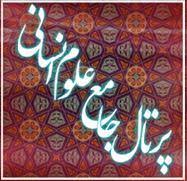About the journal
Recent Articles
-
Open Access Article
1 - Requirements and Contexts for the Application of Artificial Intelligence in Physical Education for Students with Movement Disorders: A Thematic Analysis
homeyra kave ، aliakbar ajam * ، hosien momenimahmouei ، hosien soltaniIssue 83 , Vol. 20 , Summer 2025 -
Open Access Article
2 - Identifying Factors Affecting the Smartification of Secondary Schools: A Case Study of Qazvin Province
Majid Soori ، علی فرهادیمحلی * ، Alireza Maetoofi ، negin jabbariIssue 83 , Vol. 20 , Summer 2025 -
Open Access Article
3 - Systematic analysis of learning management strategies in secondary schools with a social media approach
KOBRA ABDINAVIDEH ، مرتضی سمیعی زفرقندی * ، Masoumeh erfanikhaneghahiIssue 83 , Vol. 20 , Summer 2025 -
Open Access Article
4 - Designing a Comprehensive Performance Evaluation Model for the Principals of Towhid Herat Schools Based on the Balanced Scorecard Approach
Mahmoud Rezai * ، Elham Fariborzi ، Nazia Sadat NasseriIssue 83 , Vol. 20 , Summer 2025 -
Open Access Article
5 - A Comparison of the Effectiveness of Gamification-Based Instruction and Traditional Teaching Methods in Physical Education on Enhancing Teamwork Abilities among University Students
amin amani *Issue 83 , Vol. 20 , Summer 2025 -
Open Access Article
6 - study examined the effectiveness of school-based intervention programs in reducing aggression among children and adolescents. A comprehensive search
firouze ghanizade *Issue 83 , Vol. 20 , Summer 2025 -
Open Access Article
7 - Examining the relationship between transferring training to the workplace and organizational learning and teaching
hamze yasaghi ، Mahboubeh Soleimanpouromran ، r aIssue 83 , Vol. 20 , Summer 2025 -
Open Access Article
8 - The Structure of Power and Institutional Discourse in County Education Councils: An Ethnographic Analysis of the Logics of Domination and Exclusion of Participation
Alireza Saadipour ، Zohreh Shakibaei * ، Ali KhalkhaliIssue 83 , Vol. 20 , Summer 2025 -
Open Access Article
9 - Designing and validating a conceptual model of effective mathematics teaching methods and techniques for slow-learning elementary school students in Urmia (Mixed-method research)
javad keyhan * ، Nahid Asl KandiIssue 83 , Vol. 20 , Summer 2025 -
Open Access Article
10 - Evaluating the effectiveness of problem-based learning on parental adaptation, parenting styles, and emotional regulation in mothers with aggressive young children
shahrbanoo dehrouyeh * ، sara tollabian ، Seyede solaleh Mirian akendiIssue 83 , Vol. 20 , Summer 2025
Most Viewed Articles
-
Open Access Article
1 - A Comparison of the Effectiveness of Gamification-Based Instruction and Traditional Teaching Methods in Physical Education on Enhancing Teamwork Abilities among University Students
amin amani *Issue 83 , Vol. 20 , Summer 2025 -
Open Access Article
2 - The Effect of instruction based on 7E learning cycle model on and motivation to learning in the Sciences Course
ali abdi * ، aghbal safariIssue 58 , Vol. 14 , Autumn 2019 -
Open Access Article
3 - Content analysis of the sixth grade social studies textbook based on the social skills component
Pari Fahandezh saadi * ، Hossein AflakifardIssue 71 , Vol. 17 , Summer 2022 -
Open Access Article
4 - A Study on The Contents Of Experimental Science Books In Primary Schools On The Basis Of Thonght-training Principles
hosein fakouri ، ezatallah nadi ، ali shariyatmadare ، maryam seifIssue 12 , Vol. 3 , Autumn 2016 -
Open Access Article
5 - Examining the Relationship between Ethical Leadership and Spirituality on Job Burnout with the mediating role of Organizational Learning
Ali Akbar Aghighi ، vahid mirzaei * ، majid ghadimi tavakoliIssue 78 , Vol. 19 , Spring 2024 -
Open Access Article
6 - Self-respect, child's attitude towards parents and bullying in school students
Masoumeh Moradyan ، Farahnaz Kianersi * ، mahmmod najafiIssue 80 , Vol. 19 , Autumn 2024 -
Open Access Article
7 - Curriculum model design based on augmented reality in Iran's primary education system
Somayyeh Haghighat ، Hamidreza Motamed * ، Alireza Ghasemi ZadIssue 72 , Vol. 17 , Summer 2022 -
Open Access Article
8 - Evaluate the effectiveness of the four temperaments on students' mental health
هدی عاشوری ، maryam hafezian *Issue 53 , Vol. 13 , Winter 2018 -
Open Access Article
9 - The Comparison Between Tow Methods of playing and storytelling in pre-school children self-help and Social skills
Maryam Afzalkhani *Issue 69 , Vol. 17 , Winter 2022 -
Open Access Article
10 - Analysis of Engineering and Behavioral-educational Factors in Future Schools of the Country
Ali Saeidi ، Hamed Meiboudi * ، Morteza HeidariIssue 76 , Vol. 18 , Summer 2023







